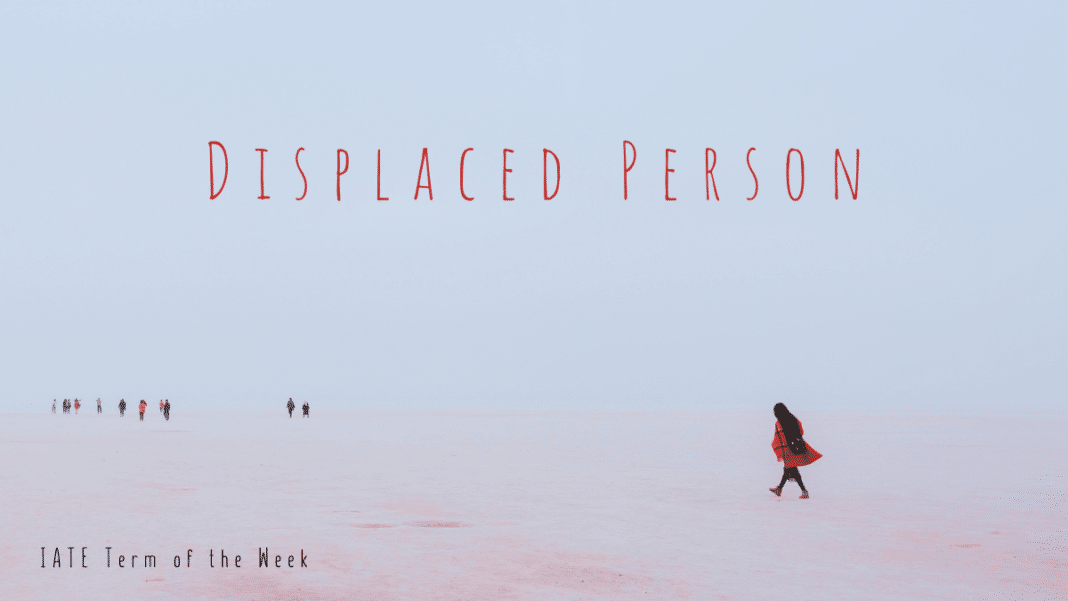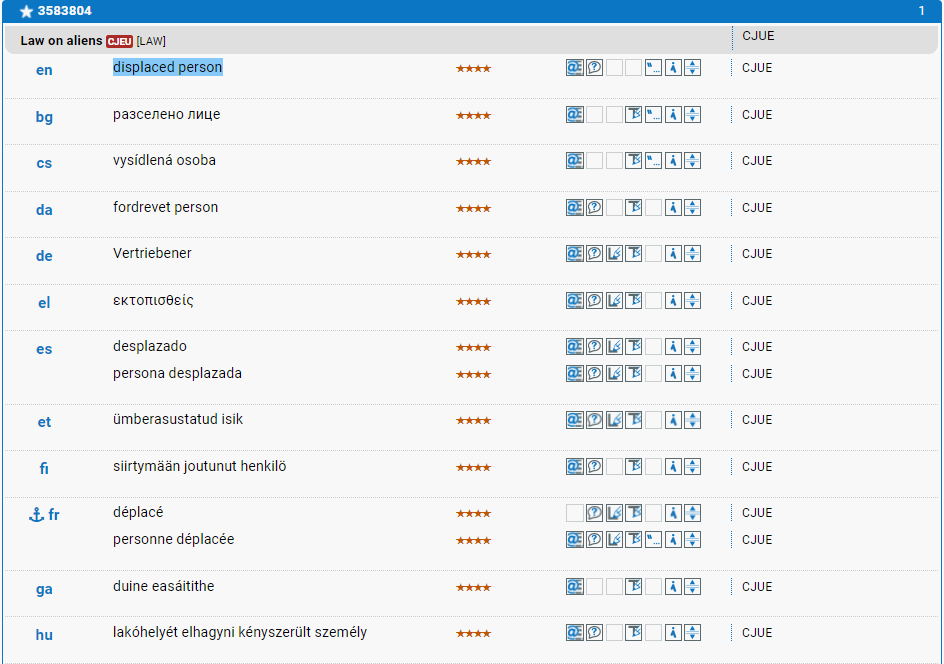Displacement of people has sadly been a constant throughout human history. Recent events that have caused displacement of people are the conflict in Afghanistan and the earthquake in Haiti. Displaced persons are those people who had to leave their home country and are unable to return to it. In most cases, they are in need of support and protection.
In this article, we will explain for what reasons people can become displaced and clarify some terminology around the displacement of people.
Reasons for displacement of people
The reasons that cause someone to become a displaced person can vary. Displaced persons usually have had to leave their country of origin forcibly. Often, they have been evacuated as part of a program supported by one or more international organisations. This kind of evacuation is motivated by concerns on human rights violation or by dangers generated by a natural disaster. Whether they did it individually or through a top-down evacuation effort, displaced persons fled their country despite their desire to stay.
Countries from where displaced persons flee cannot guarantee a secure long-term home to their inhabitants. These countries are deemed unsafe because of an ongoing armed conflict, a situation of endemic violence or an environmental crisis. The people who flee these countries would likely be victims of violations of their human rights had they decided to stay. Indeed, displaced persons are defined as such if they cannot go back to their country because, by doing so, they would put their lives at risk.
Usually, situations of serious danger cause a mass influx of displaced persons towards the European Union or other places that can give them shelter. Displaced persons are granted international protection under the Geneva Refugee Convention and Protocol (1951), a UN treaty that defines the term “refugee”, the rights that people designated as such have, and the duties that States must fulfil towards them.
The terminology around displaced persons
The terminology related to the categories of people leaving their country of origin either voluntarily or forcefully is defined in Article 1A of the Geneva Refugee Convention and Protocol, already mentioned above.
Because displaced persons leave the country where they live due to concerns for their safety, they enter the class of “forced migrants”. A forced migrant is someone who moves to another country because he or she is forced to do so. For these people migrating is not a choice but a necessity.
More specifically, displaced persons can be classified as “internally displaced persons” (IDP) if they have left the town, city or village in which they were living to move to another area of the same state. This category of people has become so widespread that an Internal Displacement Monitoring Centre was established in 1998 to collect and analyse data as an independent body.
Another kind of displaced persons are “environmentally displaced persons”. This term designates people who were forced to migrate as a consequence of an environmental crisis. You might also have heard of “environmental refugee”. This term has no legal basis, as its definition does not align with the definition of refugee given in the Geneva Refugee Convention and Protocol.
For further clarification, the definition of “refugee”, another related term, is slightly different. A refugee is a person forced to flee their country because he or she risks to be persecuted there and does not receive any guarantee of protection from their government. Therefore, a refugee is a “stateless” person who has crossed the official border of their home country.
If you are interested in terms about human rights, download the “Human Rights Terminology” booklet, compiled by the Terminology Coordination Unit of the European Parliament. The booklet is available for free on our Publications page.
References
Council of the European Union. 2001. Council Directive 2001/55/EC of 20 July 2001 on minimum standards for giving temporary protection in the event of a mass influx of displaced persons and on measures promoting a balance of efforts between Member States in receiving such persons and bearing the consequences thereof. Official Journal L 212, 07/08/2001 P. 0012 – 0023. Available at: https://eur-lex.europa.eu/legal-content/EN/TXT/?uri=CELEX:32001L0055#. [Accessed 27 August 2021].
IDMC. 2021. About us. [ONLINE] Available at: https://www.internal-displacement.org/about-us. [Accessed 27 August 2021].
Migration and Home Affairs – European Commission. 2021. displaced person. [ONLINE] Available at: https://ec.europa.eu/home-affairs/what-we-do/networks/european_migration_network/glossary_search/displaced-person_en. [Accessed 27 August 2021].
Migration and Home Affairs – European Commission. 2021. environmentally displaced person. [ONLINE] Available at: https://ec.europa.eu/home-affairs/what-we-do/networks/european_migration_network/glossary_search/environmentally-displaced-person_en. [Accessed 27 August 2021].
Migration and Home Affairs – European Commission. 2021. forced migrant. [ONLINE] Available at: https://ec.europa.eu/home-affairs/what-we-do/networks/european_migration_network/glossary_search/forced-migrant_en. [Accessed 27 August 2021].
OHCHR. 2021. Questions and answers about IDPs. [ONLINE] Available at: https://www.ohchr.org/en/issues/idpersons/pages/issues.aspx. [Accessed 27 August 2021].
UNHCR. 2005. Glossary. UNHCR Global Report 2005. Available at: https://www.unhcr.org/449267670.pdf. [Accessed 27 August 2021].
United Nations High Commissioner for Refugees. 2021. UNHCR – The 1951 Refugee Convention. [ONLINE] Available at: https://www.unhcr.org/1951-refugee-convention.html. [Accessed 27 August 2021].
United Nations High Commissioner for Refugees. 2021. UNHCR – The 1951 Convention relating to the Status of Refugees and its 1967 Protocol. [ONLINE] Available at: https://www.unhcr.org/about-us/background/4ec262df9/1951-convention-relating-status-refugees-its-1967-protocol.html. [Accessed 27 August 2021].

Written by Maria Bruno, Schuman Trainee at the Terminology Coordination Unit. She holds a master’s degree in Translation and a bachelor’s degree in Italian Language and Literature. She is trained in websites and social media management, content writing and SEO. Currently, she is studying for her Diplôme Universitaire in Terminology at the University of Savoie-Mont Blanc.


